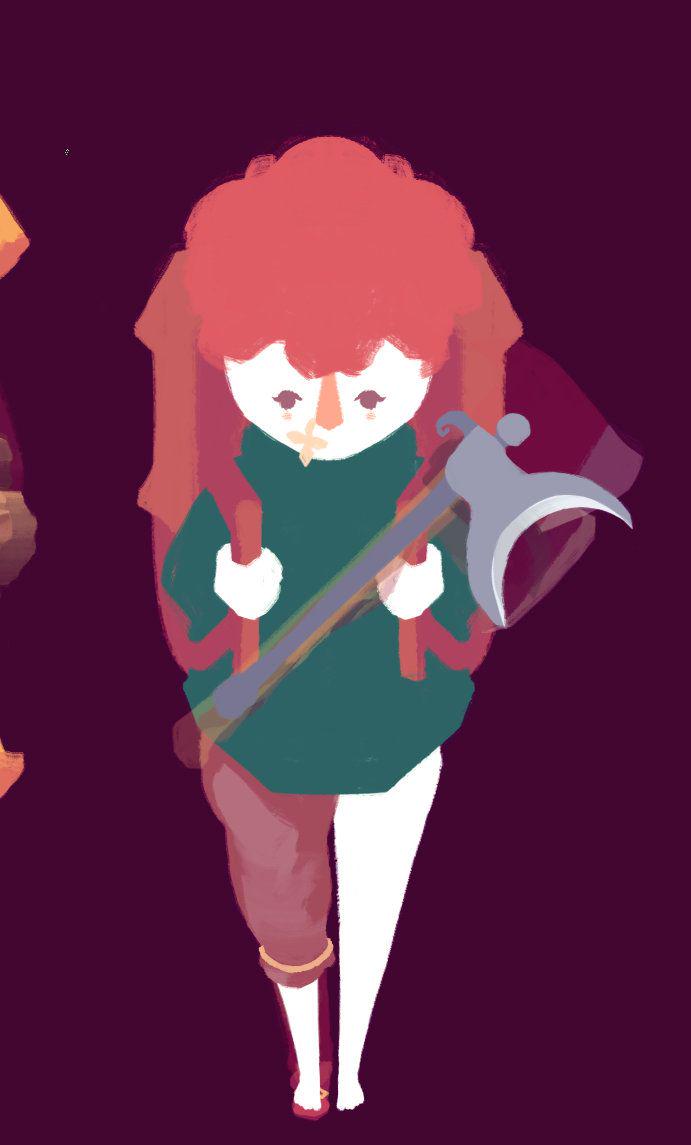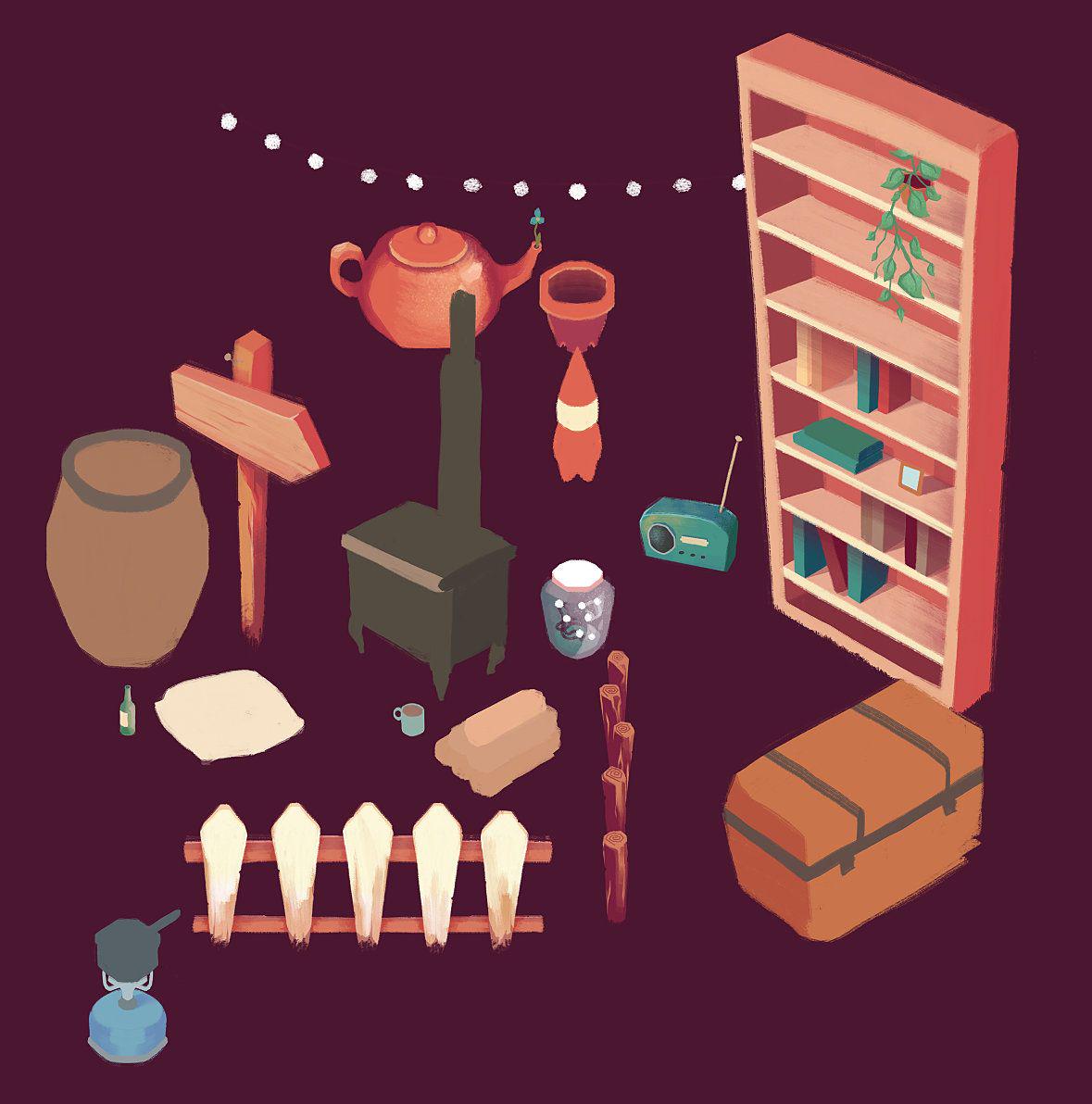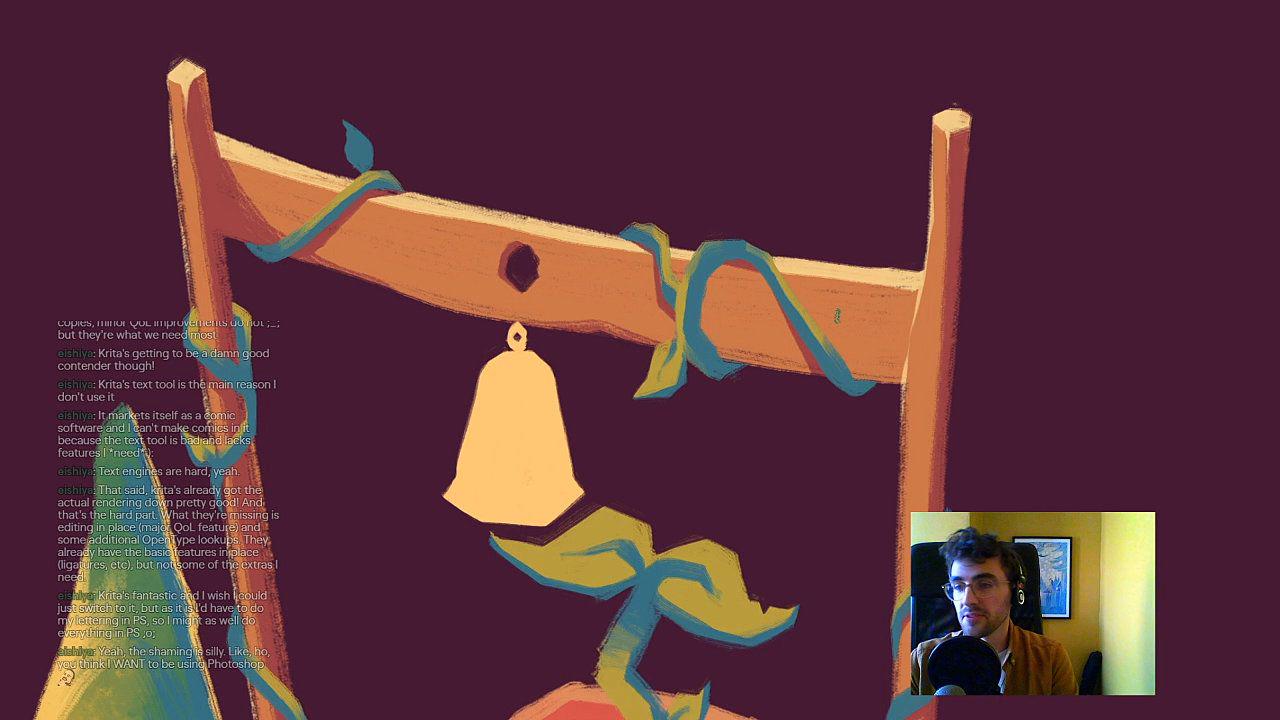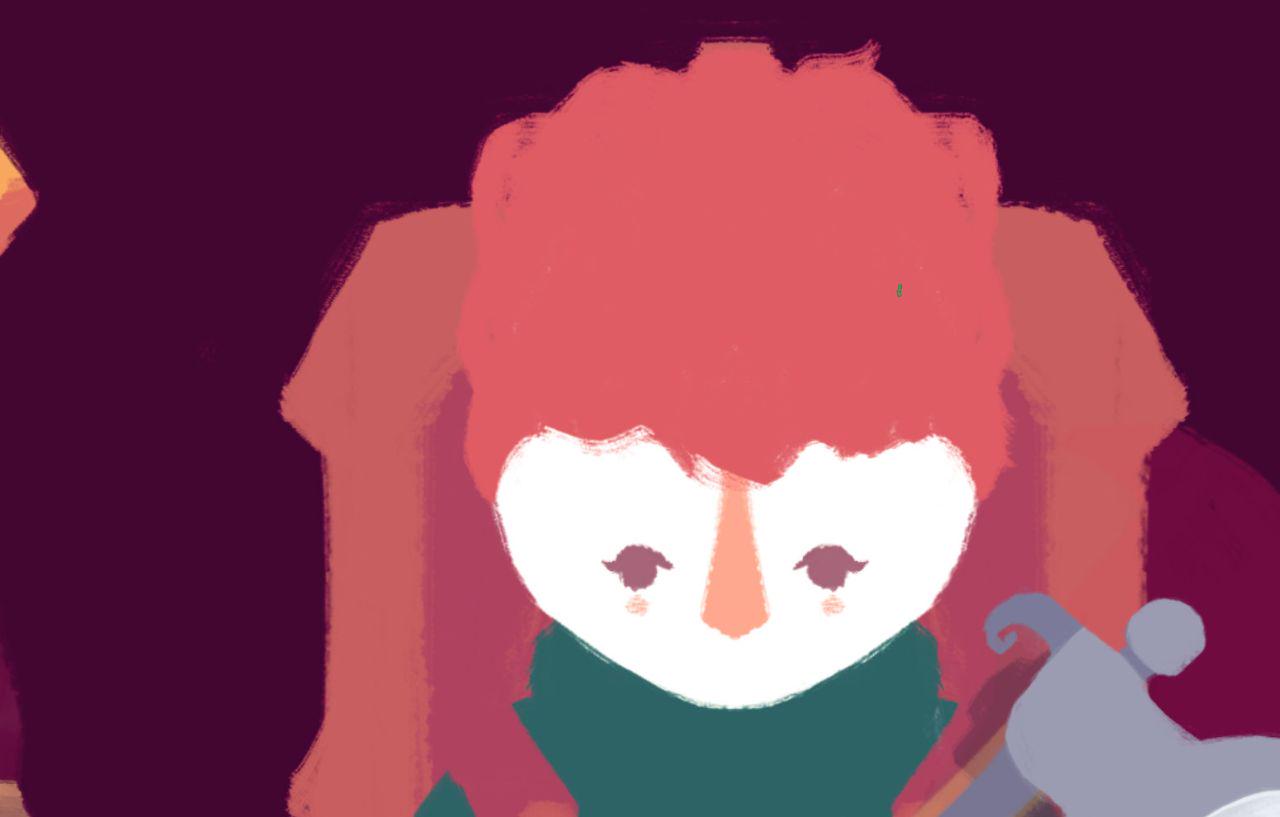Thursday Report: It’s What’s Live That Counts
I think the systems are in place now, at least for the most part. I feel as though the right step forward, after reviewing the previous alpha release – is to b-line the game to playable a state as close to the final product as possible.
‘Playable’ being the key word here. Development time is ultimately a balance between playability, variety, and quality.
The Garden Path’s gameplay loop relies on variety to a degree, so I’ll need to generate a good, sizeable amount of content to test the game’s playability.
Quality, at least right now, matters the least. So while it may be tempting to pour time into a really good looking chair, what’s important is that the chair is in the game as an identifiable object, not the artwork itself
Fortunately, since all the the items in the game are created by a single spreadsheet, if an item is on the spreadsheet, it’s in the game. That means that over 200 items are already readable by the game and entirely functional, even if the artwork doesn’t yet exist.
The artwork that’s crucial are props, NPCs, and (to some degree) player equipment. While it doesn’t matter how good ferns (as an example) look at this point, it’s crucial that they’re there in some form. Likewise, all NPCs play an important role in the game, so while they might sell items with no artwork, their presence and function is still felt by the tester.
This means essentially making quick splashes of colour for a concept, and moving on quickly to something else. As a result I’ve got lots of pretty crazy looking artboards at the moment! I’m sure the time will come when I clean it all up – but its all form over function.

Unfortunately this dampens my plan of sharing hoards of artwork content on social media to help promote the game, as most of this content is maybe 30% complete. In due course things will begin to take shape, but for now I’m a little reluctant to litter people’s feeds with half drawn wood burners.

Which is one factor that lead me to consider live-streaming parts of the game’s development – half-completed things are more interesting when they’re being worked on.
So I did just that! Yesterday for about 2 hours I did my first ever live stream. It went better than expected, exceeding my personal goal of 2 live viewers (since 1 would just be me monitoring the stream). While I knew it wouldn’t be as by-the-minute productive as a typical session working on the game, the goal is hopefully get more people interested in the development, and provide an easier place to answer questions.
I’ll definitely be streaming again next week. I had a handful of folks tell me that they would have watched live if they had more of a heads up, so I’ll likely be tweeting something out in advance from now on as a reminder.
But, if you’re interested in live development, do check out my page on Twitch. Don’t feel any pressure to make an account or follow if that’s not your scene. I want to make an effort to have Twitter and Mastodon as active platforms during the stream so people can contact me there, since I know some may be reluctant to register.

Lets just take a look a couple gameplay decisions I’ve made over the last couple weeks.
The player character, in any game really, always has a funny relationship with the player themselves. Some people want to play themselves, some people want to play anyone but themselves, and in some games it not even questioned that the physicality of the player-character is given to you rigid.
We all love customizing our Legend of Zelda Link, for instance — deciding which armour we like the look of best with what colour dye and so on. We never question why we can’t make our Link a woman, or give our Link a beard, perhaps by way of convention, or perhaps because he’s a fully formed character with a name and backstory (although, plenty of games do exist where the latter is true and you can still customize the character to your heart’s content).
In some games, however, if a certain customization option isn’t available when so many others are, it’s only natural to feel a little robbed.
I’ve wondered if I could do a successful balance in The Garden Path, one that’s somewhat centred in the ‘respect the world’ philosophy I’ve tried to bring to root everything back to. In theory, it should reduce character-creation fatigue and keep the excitement of customization into the gameplay loop, all while still feeling as though the character is (at least in someway) an extension of the player’s person. I realize I might just end up displeasing everyone.
I’ve mentioned before that skin colour is probably the one option I feel uncomfortable taking the option away for. I recall Animal Crossing back-in-the-day had a kind of ’tanning’ system where the character would gradually get darker-skinned the more they stand in the sunny weather. That’s a can of worms I don’t want to open, and lends almost nothing to the player themselves.
Having struggled with an idea for hairstyles, however, it occurred to me I could utilise a similar principle – hair growing over time. The player can have it cut back should they want to, but can’t cut their hair ’long’ like in so many games.

I like this, because it goes hand in hand with the theme of passing-time that’s core to the gameplay, but also with the absence of binary gender options. Long hair is long hair, short hair is short hair – should the player wish to couple that with a more masculine or feminine look, they can do so. I’ve made an effort to have all the different tiers of hair look appropriate either way.
Finally, a few thoughts on tea. As anyone knows tea is going to be a core part of The Garden Path’s gameplay and identity, so it’s important to me to get it right.
It always irked me that in a game that I want to feel is ‘anti-crafting’ that tea brewing ultimately a form of crafting.
Instead, I’m in the process of building a system that will feel more akin to Breath of the Wild’s cooking than a traditional crafting system. That is, the player should never be punished for what they choose to combine. With the removal of hard-recipes, the player might not be brewing things most efficiently, but it will always be worthwhile.
As such, teas will only be different teas by why of identification, functionally all teas will follow the same rules. Certain ingredients will increase stats, some will multiply particular stats, some ingredients will combo with others. For instance, adding mint to any tea will always increase a character’s charm, and sweetening a tea with honeycomb or syrups will multiply any charm benefit already there.
The game’s job is to calculate what that tea will be called. It would be boring if everything was just named exactly what’s in the tea. So, if certain criteria are met, it will receive its appropriate name – adding ginger and cardamom and other sweet spices will likely result in a Masala Chai, for example.
And this, to my delight, has brought everything full circle. It never felt right requiring tea leaves for a tea. After-all, pouring hot water over a hibiscus isn’t a ’true tea’, but it is still widely viewed as a tea. Tea itself is a plant that requires a very particular climate and geography, and a long drying and oxidisation process to become what we know as tea.
Tea would begin to consume the game – players would feel compelled to have huge tea farming operations. ‘Black’ teas, and ‘white’ teas, and ‘green’ teas are all the same plant of course, so there would need to be a system in place to oxidize the leaves at different stages in order to give the player choice.
I don’t want that. I want a garden that feels abundant with a huge variety of different herbs and spices, each with a similar sense of importance-of-function.
So — tea will not a growable plant (its visually pretty boring, so no great loss), instead dried tea leaves will be a valuable traded resource. A resource that, when brewed with other ingredients, becomes a ’true tea’, greatly multiplying the benefits of that tea.
Who is the sole trader of our valuable resource? Our good friend Tabbal the Toad, of course.
And so, finally, his impatience becomes an obstacle worth overcoming.